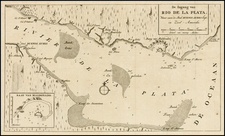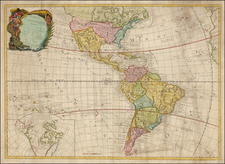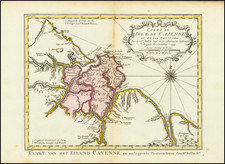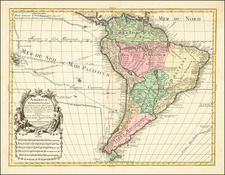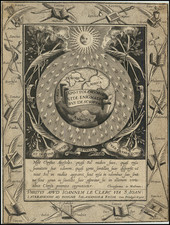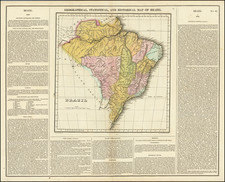Rare Miniature English Map of Guiana, Including Manoa or El Dorado
Rare map of Guiana, including the Lake Parime region, with the town of Manor or El Dorado shown, published by Sir Jonas Moore in London.
The map appeared in Moore's A New Geography. Many of the plates in the work were engraved by Herman Moll, who had moved to London in 1678 and had not yet begun publishing under his own name. These are among the earliest known maps engraved by Moll. Burden credits Moll's first map as being his work for William Berry, also in 1681.
Rarity
The maps of Sir Jonas Moore are very rare.
AMPR / oldmaps.com lists no examples of the map on the market in the past 30 years.
This is the first example of the map we have seen on the market in more than 20 years.
Sir Jonas Moore, FRS was an English mathematician, surveyor, ordnance officer, and patron of astronomy. He took part in two of the most ambitious English civil engineering projects of the 17th century, draining the Great Level of the Fens and building the Mole at Tangier. In later life, his wealth and influence as Surveyor General of the Ordnance enabled him to become a patron and driving force behind the establishment of the Royal Observatory, Greenwich.
By 1650 he was an established mathematics teacher and published his first book, Moores Arithmetick. In 1674, Sir Jonas Moore first used the abbreviated notation 'cos' for the trigonometric term cosine. He went on that year to be appointed Surveyor to the Fen drainage Company of William Russell, 5th Earl of Bedford, and worked on draining the Fens for the next seven years.
In 1658, Moore roduced a 16-sheet Mapp of the Great Levell of the Fens, which provided an effective means of displaying the Company's achievements in altering the Fenland landscape of East Anglia. The scale of the map (about two inches to the mile) was not to be bettered until the late 19th century.
In the early 1660s, Moore worked mainly as a surveyor, mapping the River Thames from "Westminster to the sea" in 1662, his first commission from a government body. From 1663, James, Duke of York became Moore's chief patron. In June, Moore visited Tangier (an English possession from 1661 to 1684) as part of a team to design a stone pier. On his return, he prepared a map with the title A Mapp of the Citty of Tanger with Straits of Gibraltar. Described by Jonas Moore Surveyor to his Royall Highness the Duke of York. When it was completed in March 1664, Samuel Pepys, an active member of the Tangiers Committee, was impressed with the map "which is very pleasant, and I purpose to have it finely set out and hung up.
With the patronage of the King's brother, Moore became a member of the Ordnance Office. He was appointed Assistant Surveyor of the Ordnance on June 19 1665 as full deputy to Francis Nicholls, who had been Surveyor since 1660. Moore became Surveyor-General of the Ordnance after the death of Nicholls in 1669.
Moore received his knighthood on January 28,1673, probably as a reward for his duties during the Third Dutch War. With the end of the war in 1674, Moore was able to pursue his interest in astronomy and attempted to gain support from the Royal Society for an observatory at Chelsea College. Moore was elected to the Royal Society in 1674, but the proposal for an observatory at Chelsea came to nothing. He continued as an active member, and in May 1676 he was appointed a Vice-President of the Royal Society.
When Charles II appointed John Flamsteed his "astronomical observator" in 1675, Flamsteed had already enjoyed Moore's patronage since 1670, when Moore presented him with a Towneley micrometer. The Ordnance Office was responsible for the building of the Royal Observatory at Greenwich, which was completed in June 1676. Moore provided much of the Observatory's foundation equipment including the two "Great Clocks" by Thomas Tompion, out of his own pocket









